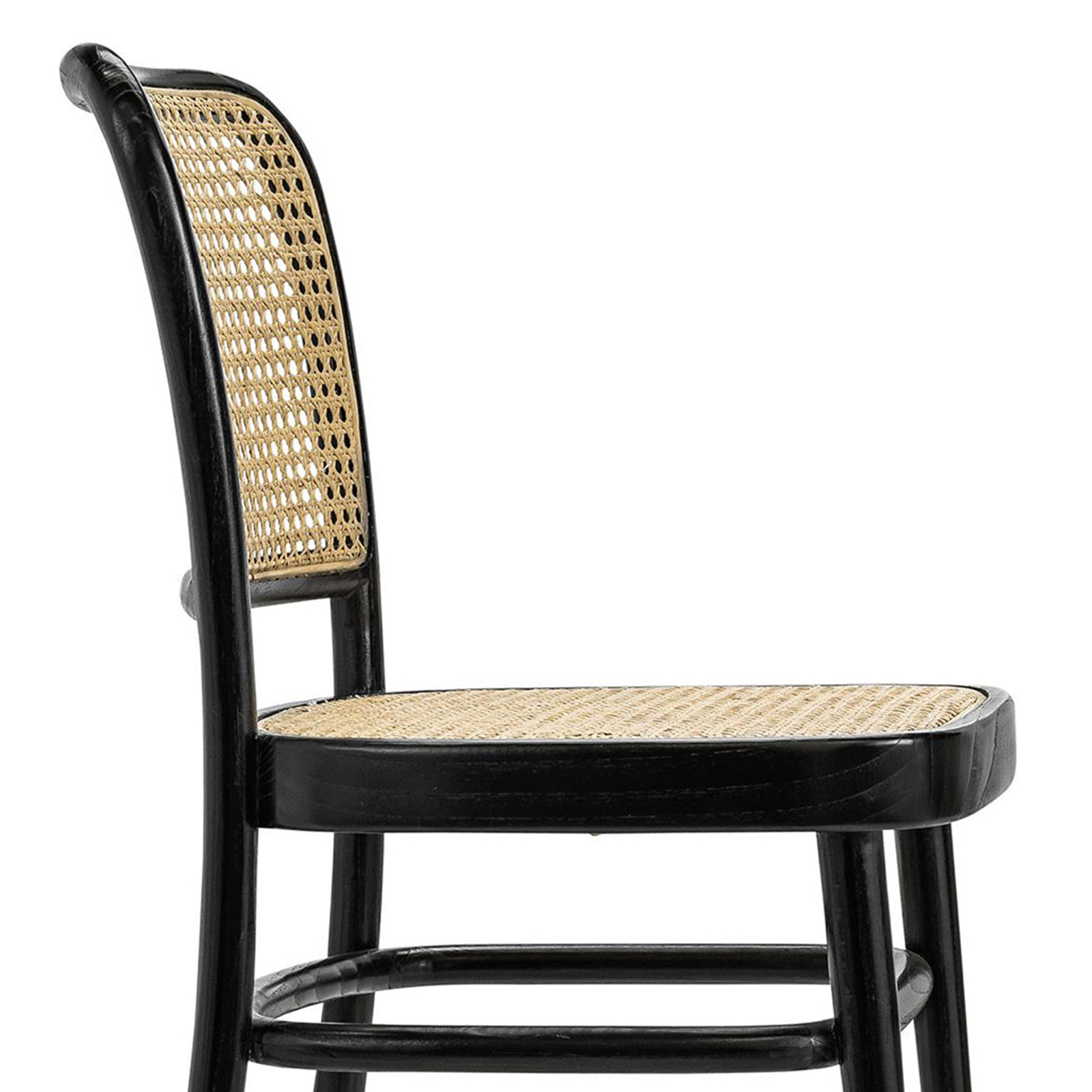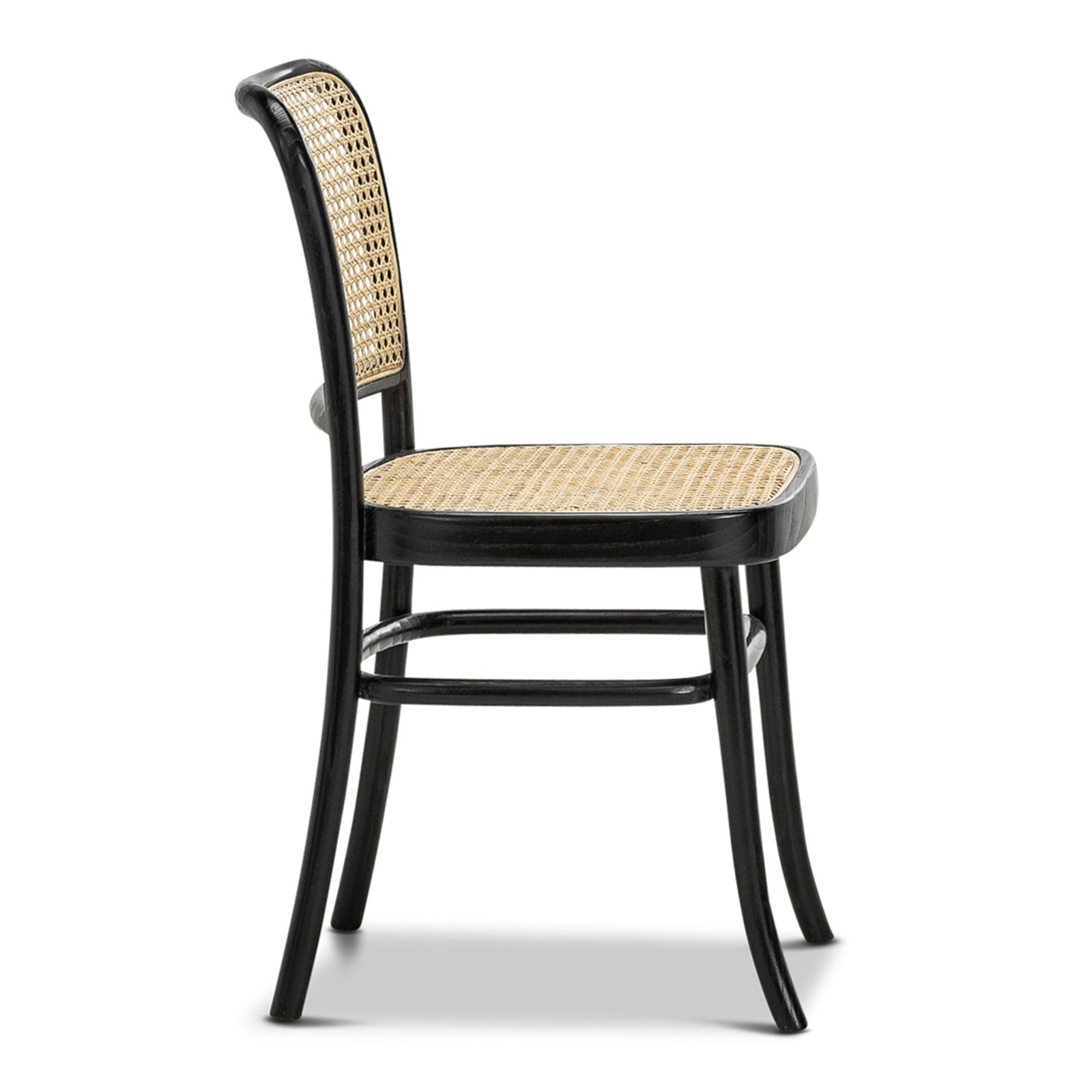Design & Aesthetics of Black Cane Side Chairs

The black cane side chair, a seemingly simple piece of furniture, holds a profound aesthetic power. Its enduring appeal stems from a harmonious blend of functionality and artistry, a testament to the enduring human desire for both comfort and beauty. The interplay of materials and the careful craftsmanship involved create a piece that transcends mere utility, becoming a quiet statement of style and grace in any space. Let us delve into the diverse expressions of this timeless design.
Variations in Design Styles
The beauty of the black cane side chair lies in its adaptability. The fundamental design – a woven cane seat and back supported by a frame – allows for incredible variation. The frame itself can be crafted from a multitude of materials, each lending a unique character to the overall piece. Solid wood frames, for instance, offer a sense of warmth and traditional elegance. Hardwoods like oak or mahogany imbue the chair with a rich, sophisticated feel, while lighter woods like beech or ash provide a more delicate and airy presence. Metal frames, on the other hand, introduce a modern edge, with sleek lines and industrial aesthetics. Black metal, in particular, creates a striking contrast against the natural texture of the cane, resulting in a visually dynamic piece. Wrought iron frames can add a touch of rustic charm, while chrome or brushed steel contribute a contemporary feel.
Common Design Features of Black Cane Side Chairs
The following table illustrates the diverse design features found in black cane side chairs, showcasing the versatility of this classic design. Note that these are common examples, and many variations exist.
| Chair Style | Frame Material | Seat Height (inches) | Backrest Style | Armrests |
|---|---|---|---|---|
| Traditional Windsor | Wood (Oak) | 18-20 | Slightly curved, high back | Yes |
| Mid-Century Modern | Wood (Beech) | 17-19 | Low, slightly reclined | No |
| Industrial | Black Metal | 16-18 | Straight, low back | No |
| Farmhouse | Painted Wood | 18-20 | Slightly curved, medium height | Yes |
| Eclectic | Mixed Materials (Wood & Metal) | 17-19 | Varied, often asymmetrical | Optional |
Visual Impact in Different Interior Design Settings
A black cane side chair possesses an inherent adaptability that allows it to seamlessly integrate into a multitude of interior design styles. In a modern setting, its clean lines and minimalist aesthetic contribute to a sense of sophisticated simplicity. The chair’s dark frame acts as a grounding element, contrasting beautifully with lighter-colored furniture and walls. In a traditional interior, the chair’s natural cane and potentially ornate wooden frame blend harmoniously with antique furnishings and rich fabrics, adding a touch of understated elegance. Within an eclectic space, a black cane side chair serves as a versatile anchor, unifying disparate elements through its classic yet adaptable design. Its woven texture adds a layer of warmth and visual interest, while its dark frame provides a sense of balance and stability amidst a collection of diverse pieces. The chair’s inherent versatility allows it to become a focal point or a subtle complement, depending on the surrounding decor. It whispers stories of enduring style and craftsmanship, enhancing the ambiance with a touch of quiet sophistication.
Black Cane Side Chairs in Popular Culture & History

The enduring appeal of the black cane side chair transcends mere functionality; it speaks to a rich history interwoven with cultural shifts, artistic expression, and evolving design philosophies. These chairs, with their elegant simplicity and enduring strength, have quietly witnessed the unfolding drama of human history, appearing in homes, workplaces, and public spaces across various eras. Their presence in popular culture reflects their adaptability and timeless elegance.
The journey of the black cane side chair is a testament to the enduring power of simple, well-crafted design. Its evolution mirrors broader societal changes, reflecting shifts in taste, technology, and manufacturing capabilities. Understanding this evolution offers a unique perspective on the social and cultural landscapes of the past.
Historical Periods Featuring Black Cane Side Chairs
Black cane side chairs enjoyed periods of significant popularity across various historical design movements. Their versatility allowed them to seamlessly integrate into diverse aesthetic contexts, from the understated elegance of Victorian interiors to the more streamlined designs of the mid-century modern era. The chair’s inherent adaptability meant it could be easily adapted to complement prevailing styles.
“The cane seat, with its lightness and breathability, offered a welcome contrast to the heavier upholstered furniture prevalent in many periods. Its simple construction also made it a relatively affordable option, ensuring its accessibility across different social classes.” – Excerpt from a hypothetical historical furniture catalogue.
Black Cane Side Chairs in Art, Literature, and Film
The black cane side chair’s ubiquitous presence has made it a recurring motif in various artistic mediums. While not always the central focus, its inclusion often subtly contributes to the overall atmosphere and narrative. For example, imagine a scene in a period drama: a solitary black cane side chair sits by a window in a dimly lit study, hinting at the quiet contemplation of the character. The chair’s understated elegance complements the scene’s mood without drawing undue attention to itself. In literature, a description of a black cane side chair in a character’s living room could subtly convey the character’s socioeconomic status or personal taste.
Evolution of Black Cane Side Chair Design
The design of the black cane side chair has undergone a gradual evolution, reflecting technological advancements and shifting aesthetic preferences. Key changes in style, materials, and manufacturing techniques have shaped the chair’s appearance and functionality over time.
The following timeline illustrates key milestones in the evolution of the black cane side chair:
- Early 18th Century: Simple, utilitarian designs using readily available materials. Often featured basic construction and less refined cane weaving techniques.
- Late 18th & Early 19th Centuries: Increased sophistication in design and craftsmanship. More elaborate curves and detailing were introduced, reflecting the stylistic influences of neoclassicism and the Regency period. Higher quality cane weaving techniques became more common.
- Victorian Era (Mid-19th Century): A wide variety of styles emerged, reflecting the eclectic tastes of the period. Some chairs incorporated ornate carvings and embellishments, while others maintained a simpler, more streamlined aesthetic. Mass production techniques started to impact manufacturing.
- Early 20th Century: The Arts and Crafts movement influenced designs, emphasizing handcrafted quality and natural materials. Simpler, more functional designs gained popularity.
- Mid-20th Century: Mid-century modern designs embraced clean lines and minimalist aesthetics. Cane chairs were often integrated into modern interiors, reflecting a renewed appreciation for simple elegance and functionality.
- Late 20th & 21st Centuries: A resurgence of interest in vintage and antique furniture led to renewed appreciation for classic black cane chair designs. Contemporary designers also continue to draw inspiration from historical styles, creating new interpretations of the classic form.
